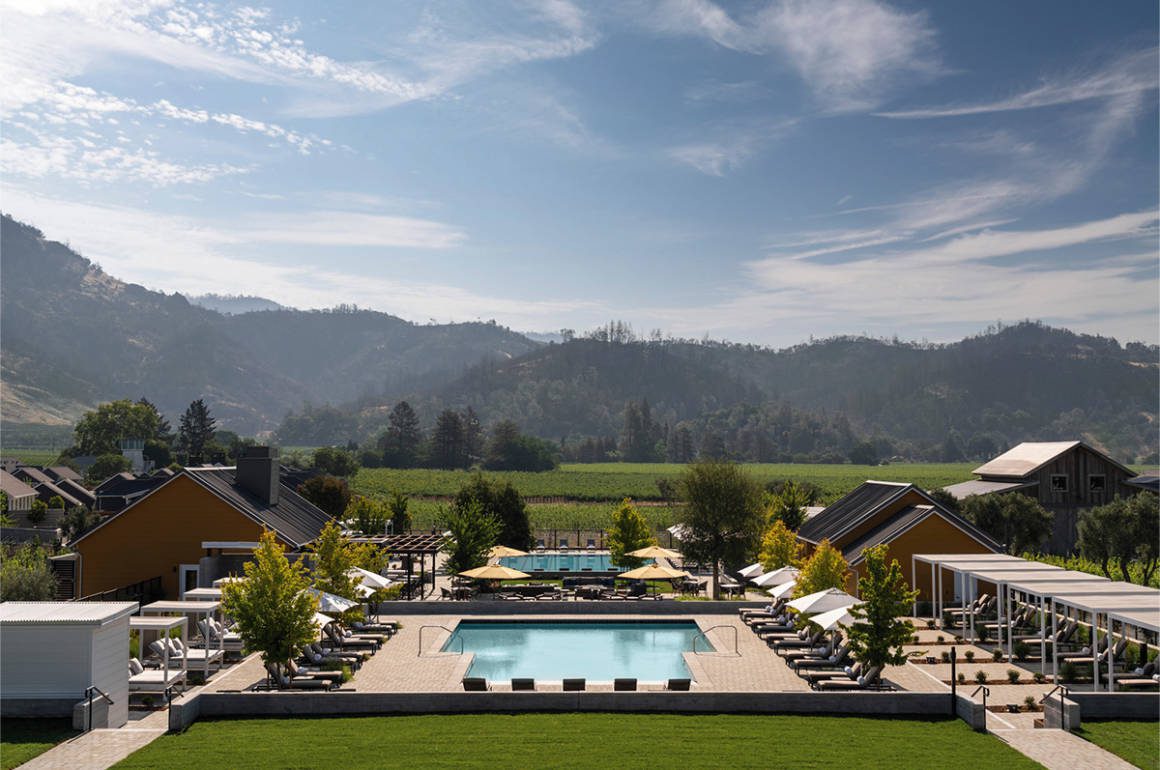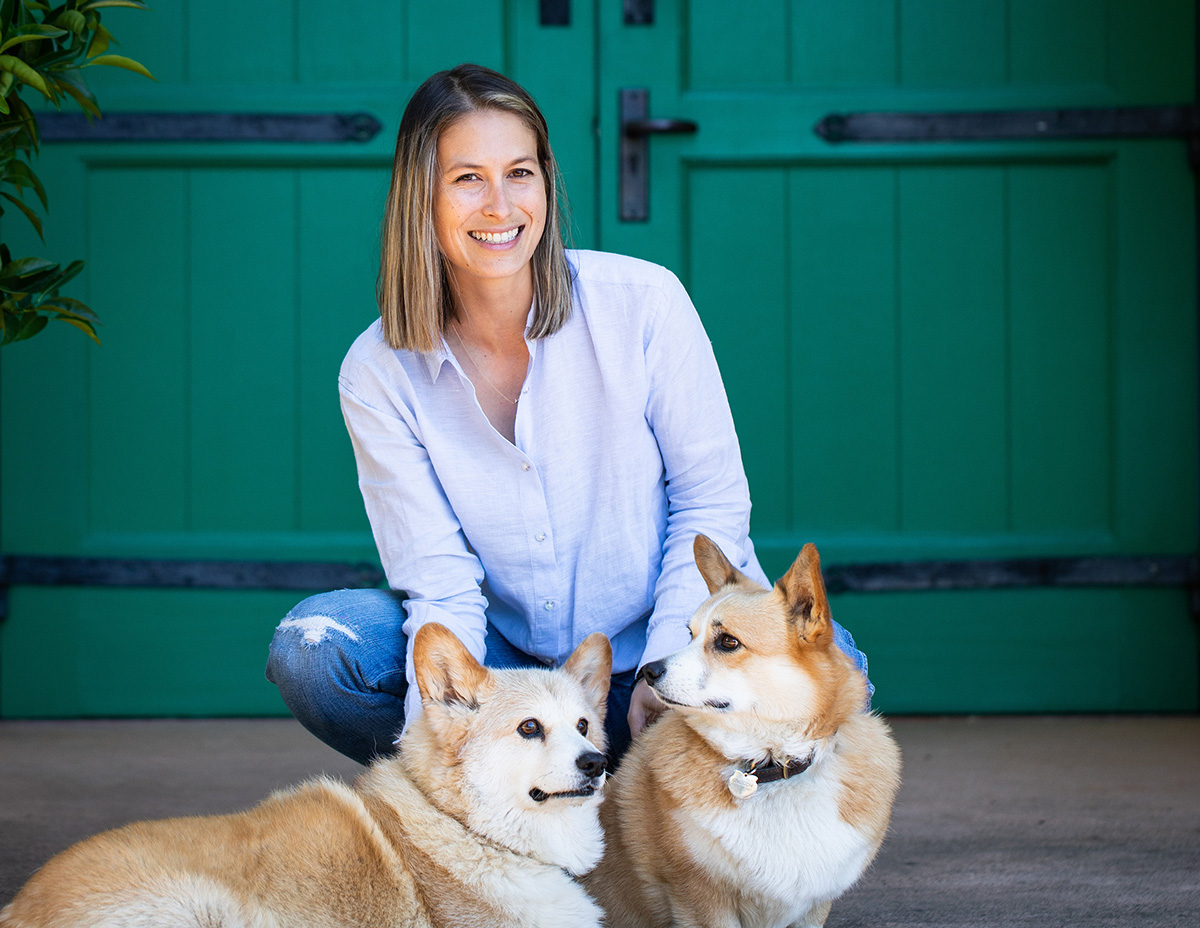
The Magill Estate, South Australia, home of Penfolds since 1844
One of the world’s great red wines comes, unusually, not from a hallowed single piece of land, but from an ever-varying blend of vineyards in South Australia. Penfolds Bin 707 has risen meteorically into the consciousness of wine collectors in the last couple of decades, renowned for its silken balance and depth. Darius Sanai meets Penfolds Senior Winemaker Steph Dutton over a tasting of vintages ranging from 1990 to 2021 to discover insights into a wine every connoisseur should be considering for their cellar, dining table – and home cinema
Wine connoisseurs seeking the world’s great Cabernet Sauvignons typically have two broad styles to explore. There are the old-world wines of Bordeaux, including great names like Chateau Lafite and Chateau Mouton-Rothschild, Cabernet-dominated red wine blends that are complex, often austere, and reserved; and the more exuberant, rich, sweeter style of Napa Valley Cabernet from California. To these (very broad generalisations), we can add a third: Bin 707, a Cabernet Sauvignon made in South Australia by the celebrated wine brand, Penfolds.
Bin 707 is distinctive as, like many Penfolds wines from Australia and elsewhere, it is not sourced from a particular estate or plot of land: instead, each year, the winemakers choose what they think are the greatest Cabernet Sauvignon grapes from around the region, that will work best in harmony with each other, and blend them to make Bin 707. (And in years when the grapes are not deemed good enough, the wine is not made at all).
Follow LUX on Instagram: @luxthemagazine
The wine has a typical Penfolds high-end class and style: immensely smooth, refined, sophisticated and balanced, without being overwhelming with any single element: neither too rich, nor austere, nor over fruity, nor bitingly tannic. And like all the world’s great wines, Bin 707s develop with age, adding layers and subtlety while retaining their essential character and soul.
But how do you create such a distinctive wine? Darius Sanai organised a conversation and tasting, over Zoom, with Steph Dutton, Penfolds winemaker, to find out more. Dutton outlines in her own words some background behind what is becoming one of the world’s legendary Cabernets; and as they taste through vintages, both Dutton and Sanai give their thoughts on each.

Steph Dutton conducted our tasting from the tasting room at Penfolds celebrated Magill estate in Australia
Steph Dutton, Penfolds Senior Winemaker, on Bin 707:
“Bin 707 has always led the charge for Cabernet, which here in Australia was a variety that took longer to find its feet compared to Shiraz. Yet Cabernet is still king in the fine wine world in terms of its nobility, its ageability, and this ability for Cabernet to tell a very long-lived story.
Bin 707 is now attaining a real cult following that has previously always been attached to Grange (Penfolds’ famous Shiraz). Our job as winemakers with a wine like Bin 707, which has been around since its inaugural release in 1964, is to honour the style that our predecessors have already carved out, but we should also still be making the 1% and 2% changes every year in the right direction in the name of excellence.
Whether it’s Grange or Bin 707 , the rule about selecting the fruit to go in the wine is that it doesn’t matter where it comes from, as long as it’s the best. And so as you go through warm vintages, cool vintages, and everything in between, the different regions are going to be represented at different percentages. It’s the best of the best from each vintage.”

Bin 707 has a distinctive and balanced style of its own, appealing to collectors of Cabernet Sauvignon around the world
Penfolds Bin 707 1990
Steph Dutton: 1990 is probably one of the most famous vintages in South Australia, so it was sort of the logical place to begin today. I will always be fascinated to know what the 1990 was like at the time, as I can’t time travel and go back and know what it looked like during vintage. With this wine, I like to say you can be the most intense voice in the room, but it doesn’t mean you’re the loudest voice in the room. And I think as wines age, the best examples do keep their intensity, but they become a little bit more subtle and less obvious. It’s almost like the components are retreating into themselves a little bit more, but they’re resolved.
Read more: Bettina Bryant on California’s Bryant Estate
Darius Sanai: Amazing nose, palette of colours, I want to have a Bistecca alla Fiorentina done medium. It’s got that wonderful structure to it, and I want rosemary on the steak. It’s not powerful, but it’s still full, not faded at all. If I had a case of this, I would last it out for another 20 years.

Penfolds publishes a guide to how each vintage of all of its great wines is maturing
Penfolds Bin 707 1998
SD: This is a big vintage in proportions. It is full of tannin and muscle. It should be incredibly fruit sweet. This is going to be one of your more obvious wines in the line-up. Looking at my own tasting notes, I speak about muscle, the grunt, the sinew, grainier tannins. I’ve spoken about a warmth that comes with the wine, you know, that chocolatey blackberry sort of warmth and comfort, sort of a generosity.
DS: Plenty of everything here, still incredibly refined though. Not overwhelming like some Napa Cabernets are, for example. There is plenty of fruit and tannin, but also a balance and smoothness, nothing jumps out at you too much, and it is incredibly fresh and moreish also. Just delicious. It also feels ageless: this is a wine that is 26 years old, but it could be 16 years old or six years old, with that layered balance. I would say that extra power in this one along with that freshness would make it match nicely with a chicken tajine, not too spicy, but with a little turmeric and allspice.
Penfolds Bin 707 2004
SD: This is a more elegant wine, like the 1990, while the 1998 is moodier and broodier. 2004 is a cooler climate vintage and we source fruit from different areas, depending on the vintage. The art of multi-regional blending gives you, a different skill set, but also something different that you’re offering your collectors and your loyalists. It’s a little bit like thinking of a choir with many voices, all singing together at one point in time, versus a solo artist. And our job as winemakers is probably, we don’t want to lose the solo artist in a choir, but we want the power and magic of the choir when it’s the best fit.
And so our job as winemakers is not only knowing when and how to blend, but also knowing when not to blend.
DS: Same style, like a sibling, very refined. Its layering is subtle but still distinctive. And it doesn’t taste anything remotely like 20 years old. I have had 2004 Bordeaux first growths that look and taste distinctly older than this.
SD: In the wine world, it’s a little bit like the real world. If you’re mistaken for a younger version, it’s the biggest compliment, because it means you’ve got a longer life ahead of you with wine. So to hear it looks more youthful than what it is, it’s the best thing you can say to a winemaker!

LUX tasted through six vintages of Penfolds Bin 707 at a country house in England’s Cotswolds, while speaking to Steph Dutton in South Australia
Penfolds Bin 707 2006
SD: This wine is more like a 10-year-old rather than a 20-year-old. It was from a drought year, but drought doesn’t mean it was hot, it just means it was dry. The wine is very tightly wound in the best kind of way. There’s a lot of untapped potential here being revealed.
DS: It has that youthful mouthpuckering tang but still that distinctive Bin 707 deliciousness.
SD: It has what I call that upfront fruit vibrancy and density. I think dried and cured meats with a vintage like this are lovely but also not overpowering. You know, when you think about bresaola as an example, or jamon iberico. If you go to a restaurant, bresaola is one of the best matches for aged cabernet that you can come across.
Penfolds Bin 707 2010
SD: 2010 was an incredibly strong vintage. It wasn’t the biggest of anything, but it was kind of the best of everything. Proportioned, rather than big.
DS: There are many, many layers here, but typical of this wine, it’s all very subtle and silky. It doesn’t demand your attention, like some famous Cabernets. If you wanted to, you could whiz through a bottle while watching Netflix with a sourdough pizza with nduja – there’s plenty of structure to match that spice – or you could sit with a fellow connoisseur and analyse it over water biscuits. It’s fascinating to have that dual character; with other great wines you tend to only be able to do one of those.
Penfolds Bin 707 2021
SD: Like 2010, 2021 was a fantastic vintage. You can taste that it is primary, bright, glossy, full of juiciness, very firm tannins. It’s like a little glimpse of a wine that’s in its infancy.
DS: That is the expert winemaker perspective… for me, it is dangerously drinkable now in 2024, considering that it will probably age as well as the 1990. There’s nothing forbidding about it, although it is certainly full of bright, rich colours. It’s one you could drink with a filet mignon, or sauteed chanterelle mushrooms on toast, and that would bring it out even more. But like all the others. it’s perfectly balanced, there’s nothing showy or overblown about it. You could drink it every day, as well as at Christmas.





















Recent Comments